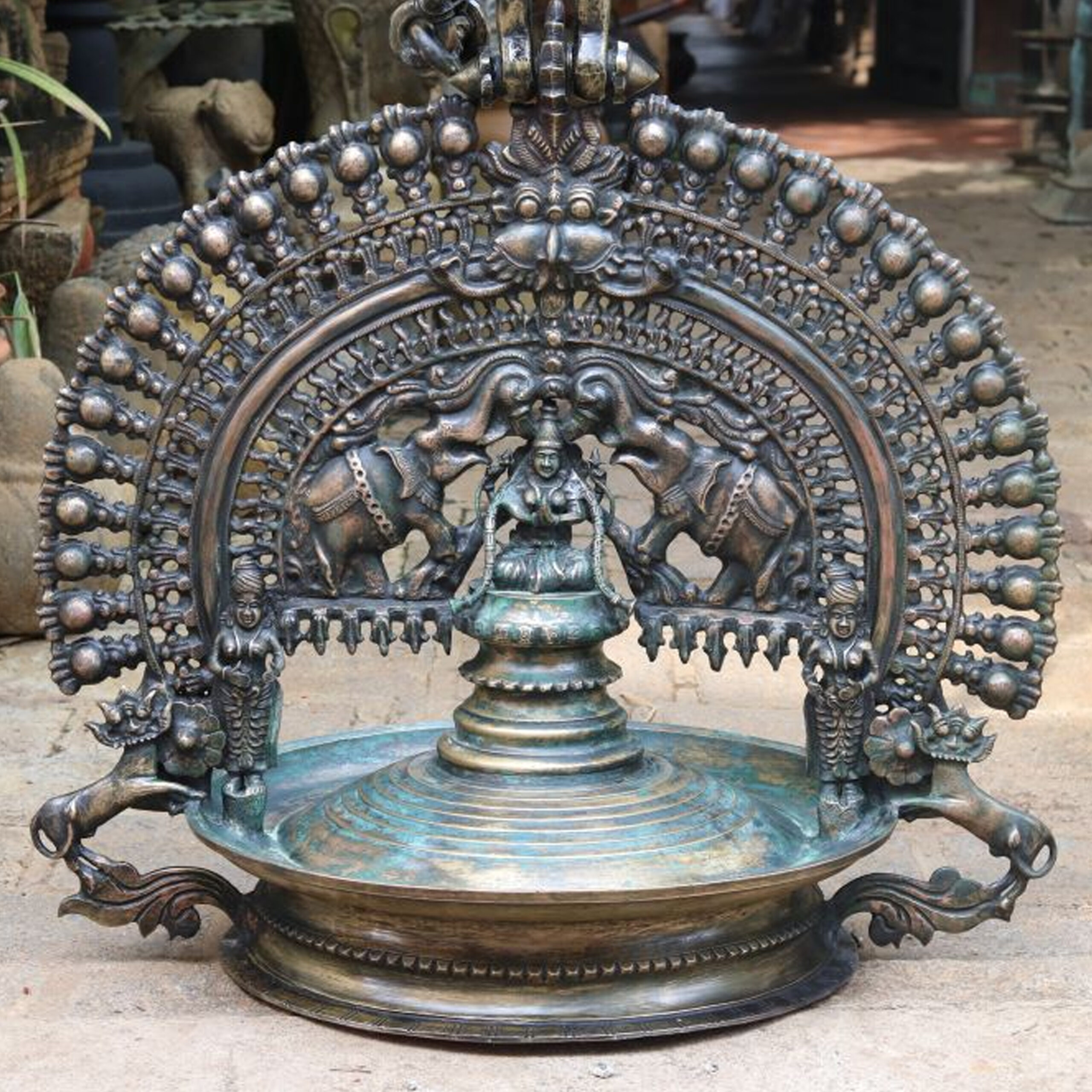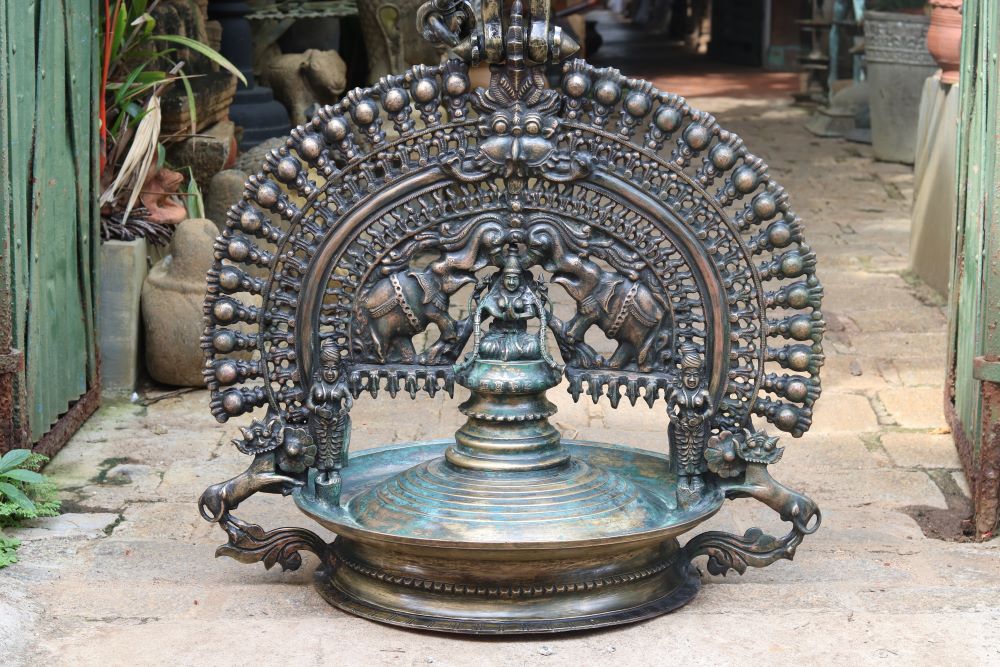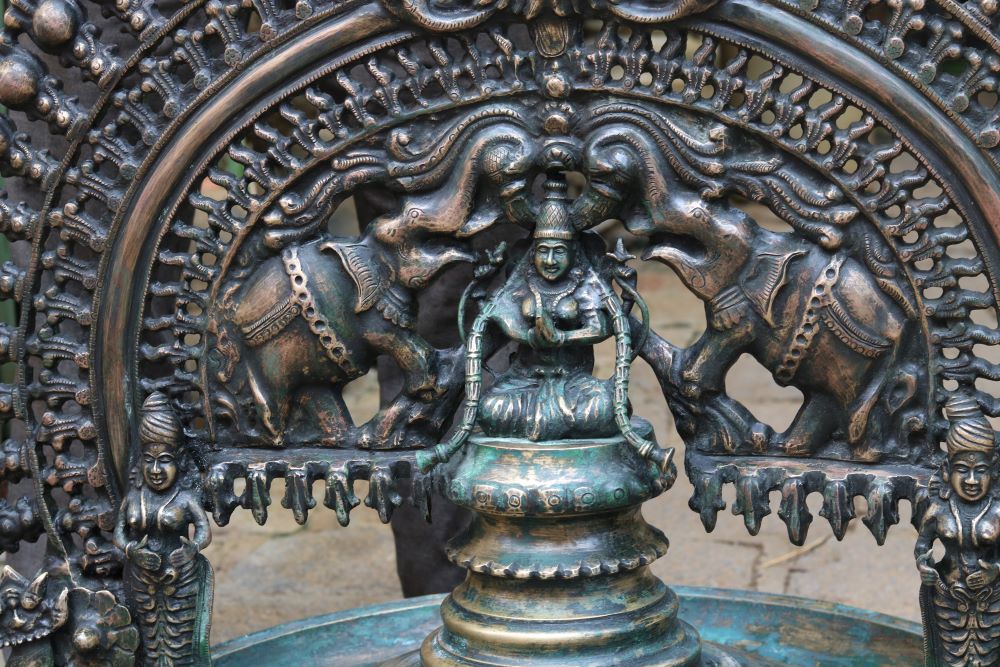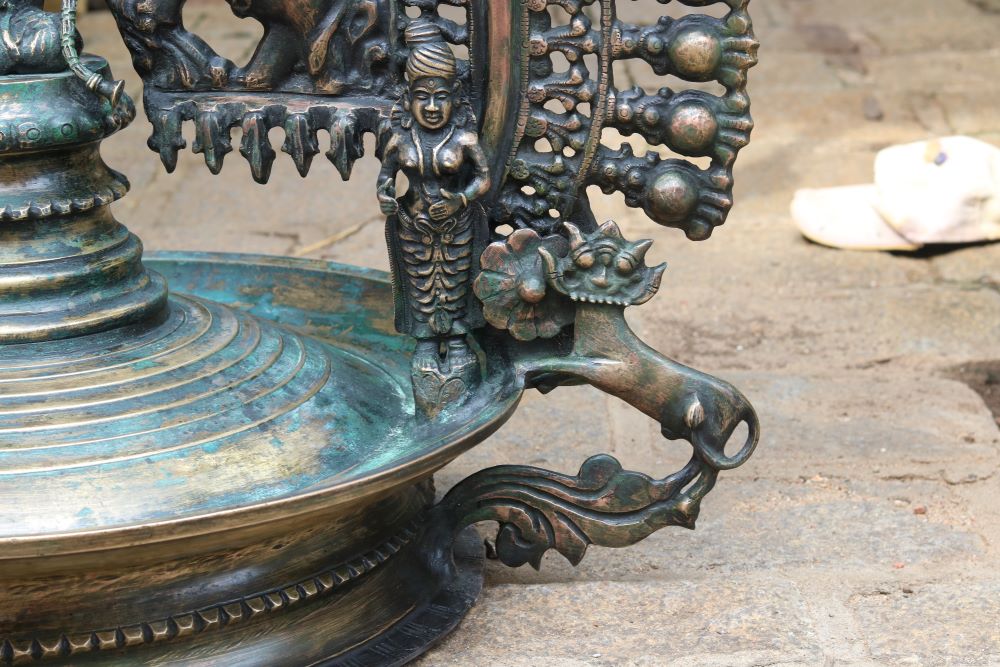Description
This is the largest and finest hanging lamp that we have ever seen.
Gajalakshmi is shown seated on a lotus, flanked on each side by an elephant (Gaja). She is shown as seated cross-legged in a Padmasana yoga posture and has two arms. In each of her upper pairs of arms, she holds a lotus stem.
This aspect of Lakshmi like most other aspects of the goddess represents prosperity, good luck, and abundance.
A finely pierced and very decorative aureole rises over the central group. Two small Yalies ( dragons ) are at the base of each side of the aureole and their tails are cleverly cast so that they run through the aureole and drape into the oil pan on the other side. Also, there are two apsara ladies are standing as guards of the goddess.
A protective kurtimukha mask has been cast into the top of the aureole. A finely cast bronze chain that terminates at the other end with a hanging hook emerges from the top of the aureole. The chain itself is very heavy as it is made to carry this huge lamp.
Lakshmi, Vishnu’s consort, is the goddess of wealth and prosperity. She is associated with light, hence the association of her image with lamps. The festival of Divali (the ‘festival of light’) is staged across India each year in her honor.
Such hanging lamps were used primarily in a temple context. They tended to be kept near the deity in the sanctum. Providing lamps to temples was considered sacred to earn the donor merit. Often, the gift entailed the lamp itself and the provision of a permanent endowment so that the temple could thereafter buy ghee or oil to operate the lamp. The endowment might take the form of money or gold but it might also be in the form of a gift of cows or buffaloes which were entrusted to cowherds who would milk the animals to obtain the ghee that could be delivered to the temple daily (Nagaswamy, 2006, p. 254).
The lamp here is of good size and too heavy. The total weight is 125 kg. It would have served as a focal point in a temple.
The example here is in excellent condition. It has a darkened brass and greenish patina from age and is a superb example of lost-wax casting from South India.
REFERENCES
Anderson, S., Flames of Devotion: Oil Lamps from South and Southeast Asia and the Himalayas, UCLA Fowler Museum of Cultural History, 2006.
Kelkar, D.G., Lamps of India, Publications Division, Ministry of Information and Broadcasting, India, 1961.
Nagaswamy, R., Timeless Delight: South Indian Bronzes in the Collection of the Sarabhai Foundation, Sarabhai Foundation, 2006.





Reviews
There are no reviews yet.